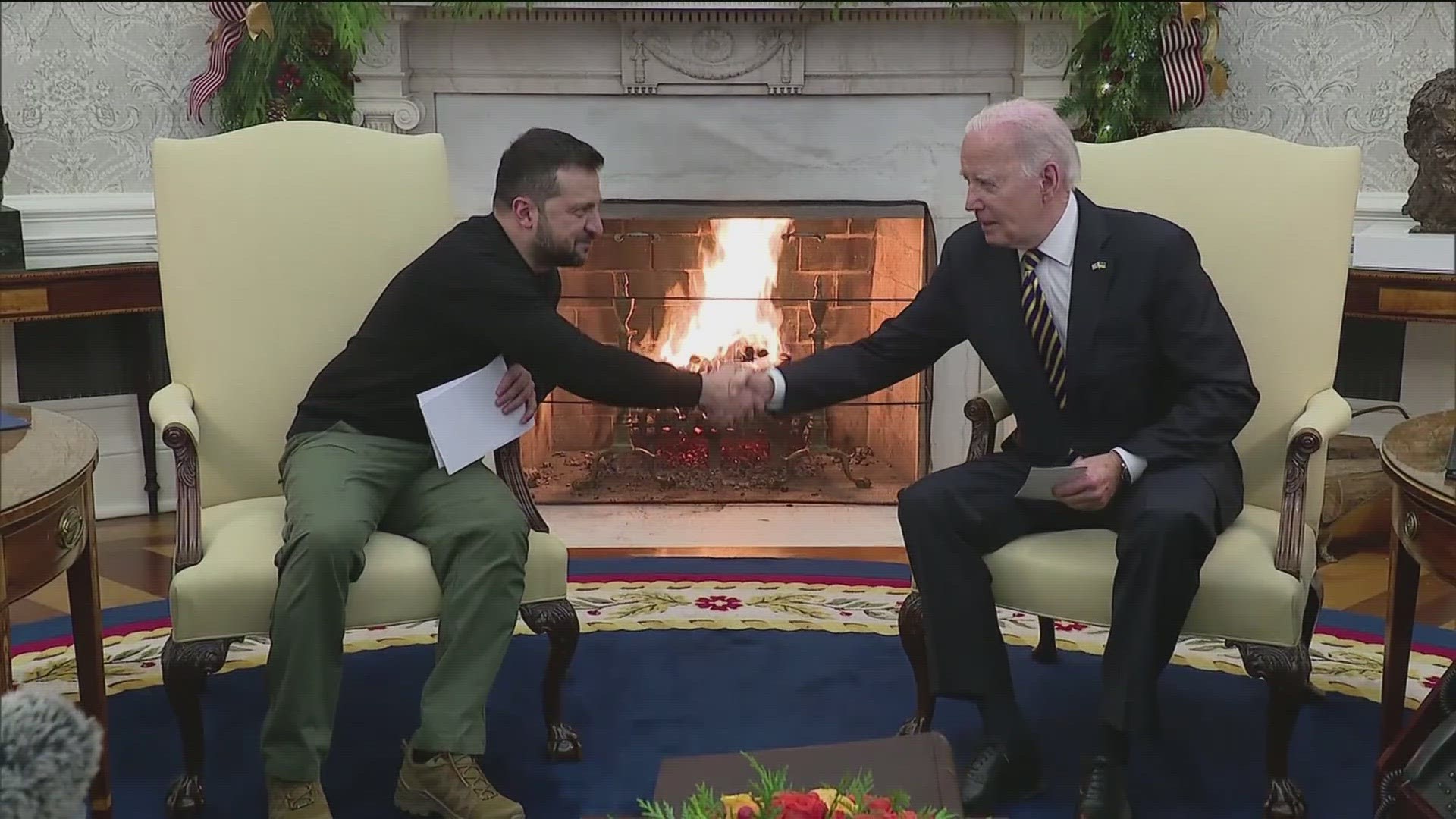MOSCOW, Russia — Russian President Vladimir Putin vowed that there would be no peace in Ukraine until his goals are achieved and said those objectives remain unchanged at a year-end news conference.
Offering rare detail on Moscow’s operation, Putin dismissed the need for a second wave of mobilization of reservists, saying there are some 617,000 Russian soldiers currently in Ukraine, including around 244,000 troops who were called up to fight alongside professional Russian military forces.
The Russian president, who has held power for nearly 24 years and announced recently he is running for reelection, was greeted with applause as he arrived in the hall in central Moscow.
Putin did not hold his traditional press conference last year after his military failed to take Kyiv and as the Ukrainian army retook swaths of territory in the east and south of the country. But with President Volodymyr Zelenskyy now returning to Washington to plead for U.S aid, a stalling counteroffensive and reports of fracturing Western support for Ukraine, the Russian president has decided to face the media once more — though the broadcast remains heavily choreographed and more about spectacle than scrutiny.
This year, ordinary citizens have the chance to phone in questions along with those asked by journalists, and Russians have been submitting questions for Putin for two weeks. It is the first time Putin, who has heavily limited his interaction with foreign media, will potentially face multiple questions from Western journalists since before the fighting in Ukraine began.
The press conference opened with questions about the conflict in Ukraine and highlighted concerns some Russians have about fears of another wave of mobilization, which has proved unpopular. In September 2022 Putin ordered a partial military call-up as he tried to boost his forces in Ukraine, sparking protests.
“There is no need,” for mobilization now, Putin said, because 1,500 men are being recruited into the Russian army every day across the country. He said, as of Wednesday evening, a total of 486,000 soldiers have signed a contract with the Russian military.
Putin reiterated that Moscow’s goals in Ukraine — “de-Nazification, de-militarization and a neutral status” of Ukraine — remain unchanged.
He spelled out those objectives the day he sent troops to the country in February 2022.
“De-Nazification” refers from Russia’s allegations that the Ukrainian government is heavily influenced by radical nationalist and neo-Nazi groups — claims derided by Kyiv and the West.
Putin has also demanded that Ukraine remain neutral — and not join the NATO alliance.
“There will be peace when we will achieve our goals,” Putin said.
The Kremlin has since repeatedly said that the “special military operation” in Ukraine will continue until those loosely defined goals are achieved.
In addition to skipping his usual call-in show with ordinary Russians and his traditional session with reporters last year, Putin's annual state-of-the-nation address was delayed until February of this year. His last news conference was in 2021 amid U.S warnings that Russia was on the brink of sending troops into Ukraine.
Along with to the fighting in Ukraine, the economy and social services are expected to be discussed at the news conference, Russian state journalists said.
Putin's appearance is primarily aimed at a domestic audience and is a chance for him to personally resolve the problems of ordinary Russian citizens and reinforce his grip on power ahead of the March 17 election.
“For the majority of people, this is their only hope and possibility of solving the most important problems,” according to a state television news report on the Russia 1 channel.
State media said that as of Wednesday, about 2 million questions for Putin had been submitted ahead of the broadcast.
In 2021, Putin called a citizen who asked about water quality in the city of Pskov in western Russia and personally assured him he would order the government and local officials to fix the problem.
Some Russian journalists, who lined up for hours in freezing temperatures to get into the venue, have donned traditional dress, including elaborate hats in order to catch Putin's attention. Many journalists also hold placards, prompting the Kremlin to limit the size of signs they can carry during the news conference, which often lasts about four hours.
Attendees must test for COVID-19 and flu before entering the news conference site. Putin enforced strict quarantine for visitors during the COVID-19 pandemic.

